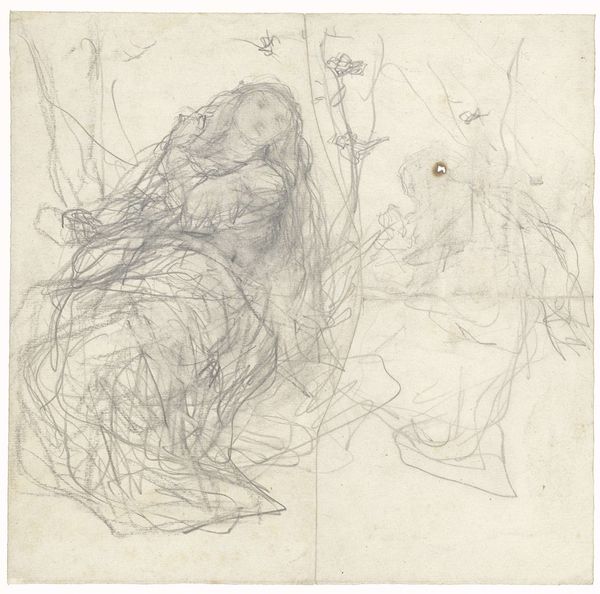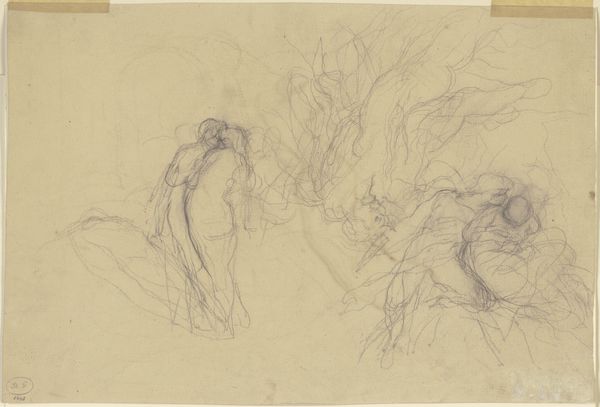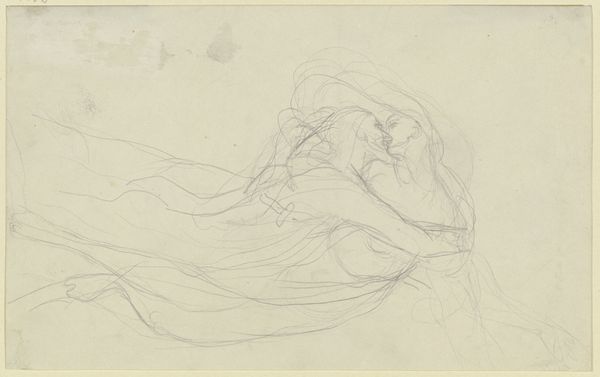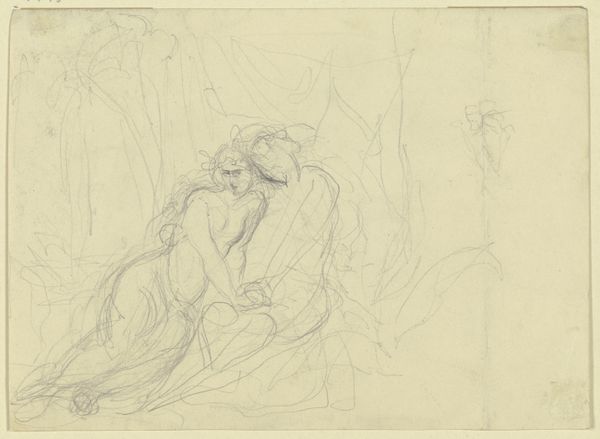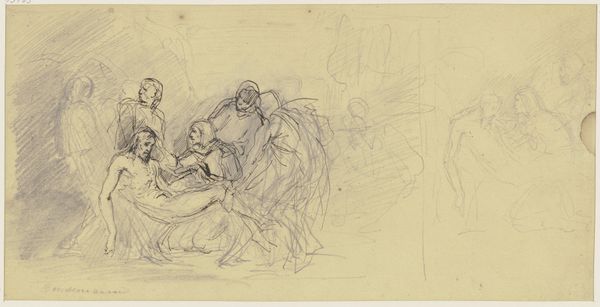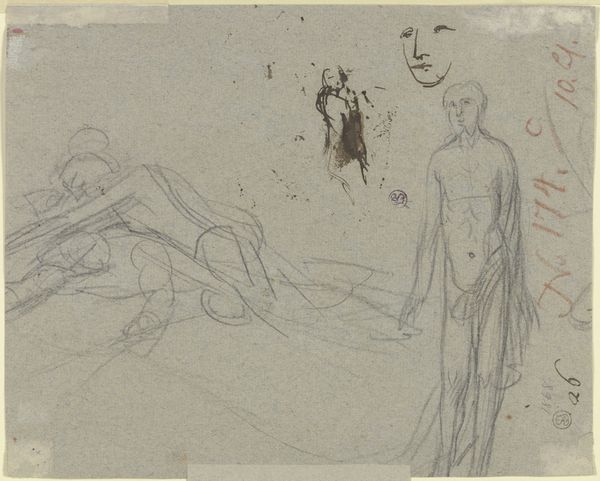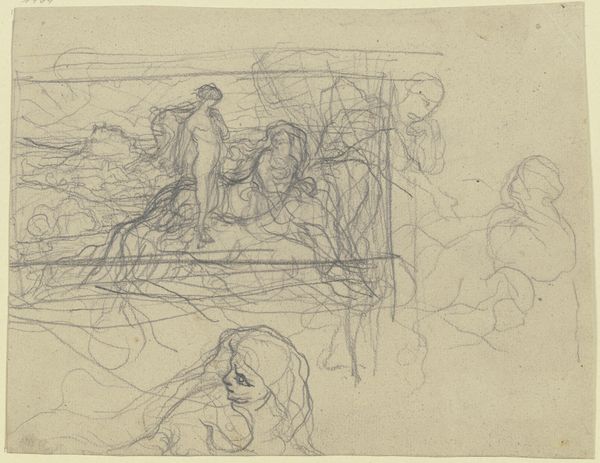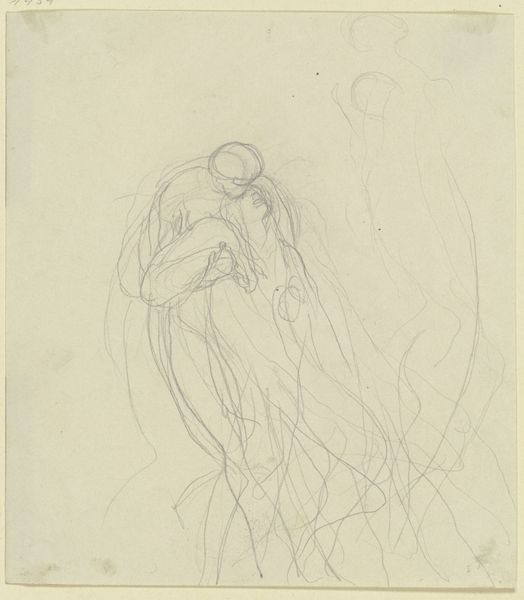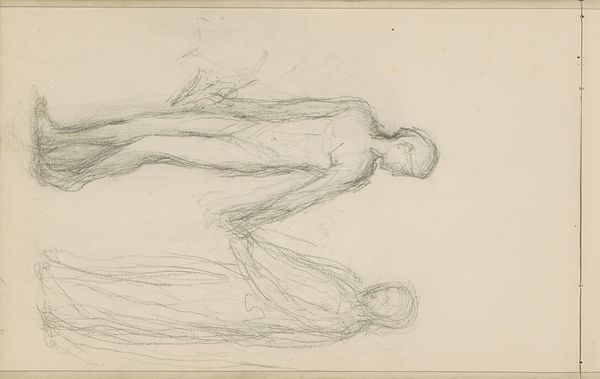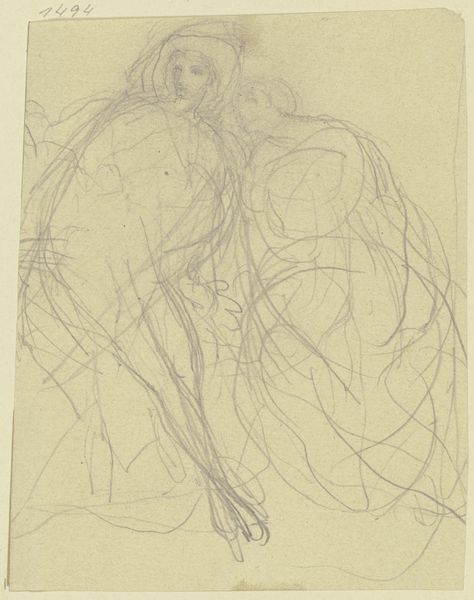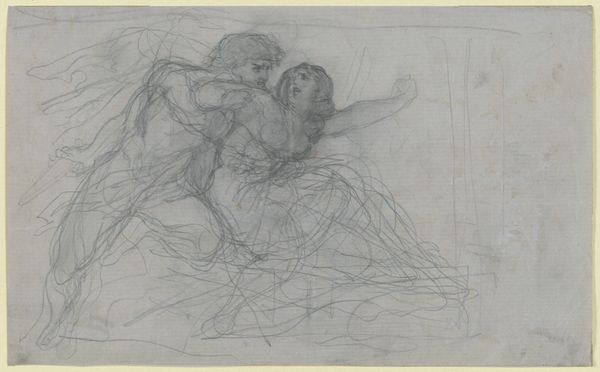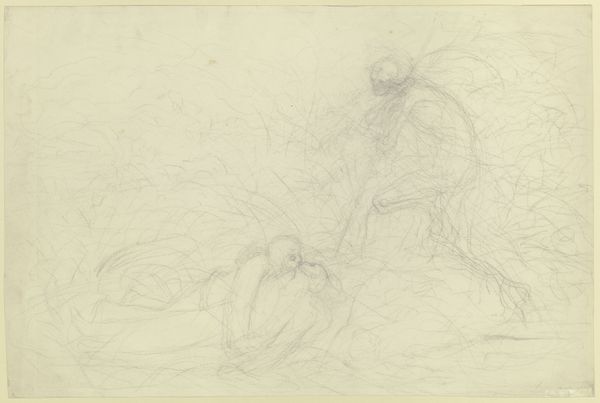
Stehender männlicher Akt, sitzende Frau, kauernder weiblicher Halbakt
0:00
0:00
drawing, paper, pencil
#
drawing
#
16_19th-century
#
pencil sketch
#
figuration
#
paper
#
sketch
#
pencil
#
academic-art
#
nude
Copyright: Public Domain
Curator: This intriguing pencil drawing, whose creation is attributed to Victor Müller, is entitled "Standing Male Nude, Seated Woman, Crouching Female Half-Nude." What strikes you about this work? Editor: The overriding impression is one of transience, of figures caught mid-thought, or mid-movement. The bare pencil lines create a sense of impermanence, almost like looking at ghostly afterimages on paper. Curator: This work gives us insights into academic artistic practices of the 19th century, and offers an understanding of the male gaze, representing female bodies in particular poses. How do these arrangements relate to constructions of femininity during that era? Editor: Interesting point, however, my interest is mostly held by how the shapes interact—the standing figure in opposition to the organic shape mass to the right; also note how all three subjects converge at their gazes into a central, yet empty, point of implied space. Curator: It also makes me consider the performative aspects of drawing itself. We are viewing bodies filtered through not just Müller's perception but also the conventions and assumptions tied into visual representation throughout that period. What narratives are implicit and reinforced? How might that period shape views of gender identity even today? Editor: Well, if you are suggesting an expression of performativity I see instead an efficient construction of tonal planes through value; not as explicit gender roles but simply as areas of light and shade on a unified picture plane, especially evident in the dense hatching used on the figure to the far right. Curator: Precisely, and it raises questions about art's participation in those performances. Who has the power to represent whom, and what impact does that have on shaping ideas around gender roles? The art might allow us to analyze it based on current feminist theory, by deconstructing the established roles, stereotypes, and imbalances ingrained throughout social dynamics. Editor: I agree the pencil-work suggests there are implied shapes. The arrangement allows each section to find an equilibrium of visual interest while not becoming overloaded in areas of shadow and texture. The use of varied weights makes it successful in terms of structure and semiotics. Curator: It definitely holds importance for any deeper thinking about historical positionalities. I invite the viewers to consider what historical narratives shape the space surrounding each figure as an expression of gender identity. Editor: And from my perspective, consider the skillful execution and visual impact of this academic exploration of space, light, and form that it provides, especially from an organizational point of view.
Comments
No comments
Be the first to comment and join the conversation on the ultimate creative platform.
